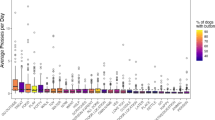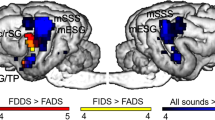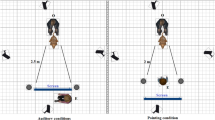Abstract
MR. HARRISON, like most of those who deal with animal communications, assumes that sounds or words must form the basis. This rests upon the assumption that speech is a primary system of communication for mankind, instead of being secondary. Many babies will begin with sign communication, and show a preference for it after they are well able to articulate words. The dog will follow human gestures as well as sounds and words. It is indeed worthy of consideration how far signs play a part in communication between animals. Instead of supposing a complicated system of words, as Mr. Harrison does, it is easy to conceive that, with the apparatus he describes, many signs may be made. Expressions of alarm, joy, direction, can be as well made with antennæ as with hands.
This is a preview of subscription content, access via your institution
Access options
Subscribe to this journal
Receive 51 print issues and online access
$199.00 per year
only $3.90 per issue
Buy this article
- Purchase on SpringerLink
- Instant access to full article PDF
Prices may be subject to local taxes which are calculated during checkout
Similar content being viewed by others
Author information
Authors and Affiliations
Rights and permissions
About this article
Cite this article
CLARKE, H. Animal Intelligence. Nature 30, 561 (1884). https://doi.org/10.1038/030561a0
Issue date:
DOI: https://doi.org/10.1038/030561a0



